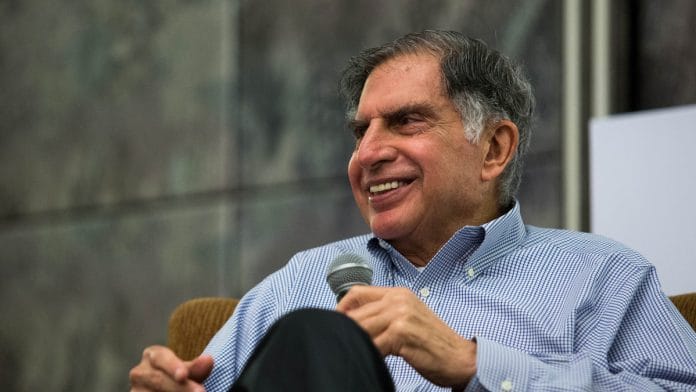It was just after eight in the morning on 11 January 2008 and I, along with a couple of my editors, was quickly ushered into a room at the Chambers of the Taj Mansingh Hotel in Central Delhi by public relations maven Niira Radia. Inside the room, having already given a few interviews, was Tata Sons Chairman Ratan Naval Tata. This was possibly one of the most important days of his life: In a couple of hours, the Tata Nano, the ‘people’s car’, was going to be rolled out on stage at Pragati Maidan.
Ratan Tata was super excited to talk about the Nano, which, like the Tata Indica a decade earlier, was his baby. He explained in great detail why he wanted to make a vehicle like the Nano, telling us how he observed entire families on motorcycles in Mumbai rains. But it was not just about giving people a ‘roof’ over their heads, it was about safety and the need to improve mobility options for Indians. All at the price of Rs 1 lakh.
A couple of hours later at the old Pragati Maidan, I had to force my way into the launch area—such was the crowd trying to get in. Forget seats, there was barely standing room. Of the hundreds—maybe thousands—of car launches I’ve attended in India and across the world, not one has come close to this level of media engagement.
The sheer number of foreign journalists astounded me, and Tata Motors had not paid for any of them. I managed to find a vantage position on the loading bay of a Tata Motors truck and then, to Richard Strauss’s Also sprach Zarathustra (an appropriate choice by a lover of Western classical music), the first Tata Nano drove out on the stage with Ratan Tata inside. The hall burst into applause and when it was time to announce the price, Tata said the immortal words: “A promise is a promise.”
I met Tata both before and after that, and just like his elation and excitement on the day the Nano rolled out, one could see the heartbreak on his face the day he pulled out of the Singur project to manufacture the Nano in West Bengal. The Singur agitation propelled Mamata Banerjee’s political career but irony and history mingled on the other side of the country.
Gujarat had provided refuge to the Zoroastrian community when they fled Persia and Gujarat, under Narendra Modi, provided refuge to Tata Motors. A plot of land in the Sanand taluka became the base for the Nano plant. Modi already had ‘pro-business’ credentials, but people forget just how urgently he went about trying to get this deal in 2010. This burnished his reputation among the business community.
Also read: Ratan Tata brought a sense of ‘we are India, India is ours’ to business: Milind Deora
Tata’s courage, conviction
Yes, the story of the Tata Nano’s failure will be the subject of many books—I’ve written about it extensively as well. While it was a fantastic example of frugal engineering and not a bad urban commuter car, delays in production due to the Singur agitation might have been the final straw. From experience though, let me remind everyone that the Nano was frightening to drive on highways.
But to reduce Ratan Tata’s contribution to just the Nano is not fair.
We have Tata to thank for the Indica, the Indigo sedan (in its various avatars), the Tata Safari, and, for those who remember, the Sierra and the Tata Estate from the 1990s. A dear school friend’s father owned the latter and we used it quite extensively in our ‘youthful’ days. Not all of them were great vehicles; far from it. The original Indica looked good but was not a nice car to drive, had heavy vibrations, and was nowhere near what its East Asian rivals turned out to be.
But Tata constantly asked his engineers to improve upon their creations and worked with them to achieve this, because like so many others from his community, he was a ‘crazy petrolhead Bawa’. It was he who drove the Tata Motors acquisition of Jaguar Land Rover, which has paid off handsomely for the group. Even after he officially retired, he still looked at and, according to some, approved the designs of modern Tata Motors vehicles.
If it wasn’t for his constant pushing of Tata Motors during the late 1990s and through the 2010s, I doubt the company would be enjoying the success it does today. If it wasn’t for the shift to Gujarat, would the company have been able to absorb Ford India’s plant next door for a song? Whatever my opinions on the Tata Motors passenger vehicles, Ratan Tata played an immensely important role in passenger mobility in India.
Yes, some of his decisions were not great. But he had the courage of conviction that Tata Motors can be a leader in passenger vehicles. He will be missed and I will never forget that interview.
@kushanmitra is an automotive journalist based in New Delhi. Views are personal.
(Edited by Prasanna Bachchhav)






